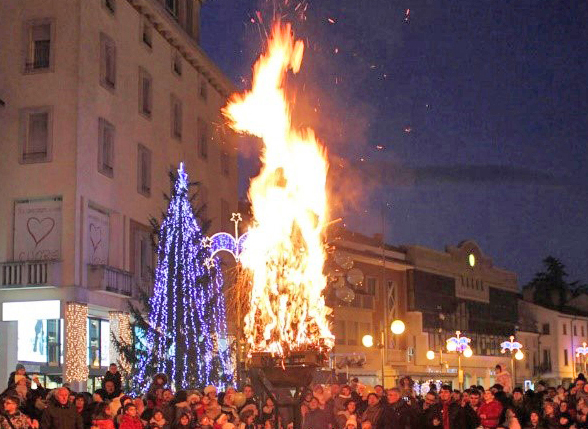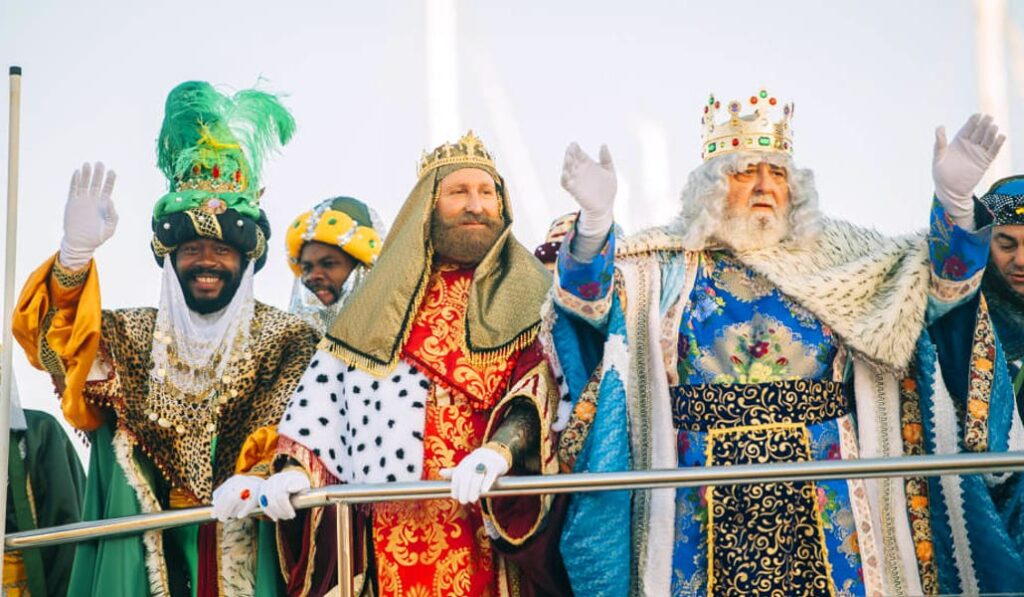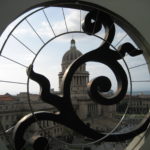Celebrating the Holidays European Style
In this unusual year of 2020, the holiday season just doesn’t feel the same for many of us! People around the world have had to alter their usual celebrations, and many will be away from loved ones to ensure they keep them safe! The end of the year is typically one that is steeped in traditions, local customs, and fun gatherings in most parts of the world. Some of these celebrations have been transplanted from the “old world” to the “new world”, some have been altered, and others have truly remained the same for hundreds or even thousands of years.
Let’s explore some of these celebrations in Europe from the comfort of our homes this year, so that you can possibly look to experience them firsthand in the coming years.

Italians and Christmas: Italians celebrate “La Vigilia di Natale” or Christmas Eve with their families during an elaborate fish or seafood feast, often including up to 7 different courses, ranging from fried fish, to eel to baby octopus, but it does vary by region. And though it is now common to exchange gifts on Christmas day, the most popular tradition is tied to “La Befana”. This old witch brings gifts to good children on the 5th of January (Eve of the Epiphany) or coal to those that have been naughty throughout the year. On the Epiphany, many towns in Northern Italy also celebrate a festival that dates back to pagan times called “Panevin”, where they pile old branches, wood, and anything else that burns nicely (sometimes up to 25 feet high in height) and light it up to burn away all of last year’s misfortunes. To accompany the festivities, they will eat “pinza” (a sweet fruit bread) and drink “vin brulé” (hot spiced wine).
 Germany and their Christmas markets: These markets, dating back to medieval times, are scattered throughout most of Germany and other nearby countries. Artisans, food vendors, and entertainers abound, and you’ll also find carousels, ice skating rinks, and other fun attractions for kids. These markets are filled with Christmas spirit with amazing decorations, gigantic Christmas trees and lots of Christmas cheer. The oldest of these markets is the Striezelmarkt located in the city of Dresden, but other famous ones include the ones in Nuremberg, Munich and Stuttgart. Though the opening and closing dates of these markets vary, most of them typically start up at the end of November and go until the end of December. These are great fun, and many companies offer Christmas market tours taking you from one town to the other to take part in these great local festivities.
Germany and their Christmas markets: These markets, dating back to medieval times, are scattered throughout most of Germany and other nearby countries. Artisans, food vendors, and entertainers abound, and you’ll also find carousels, ice skating rinks, and other fun attractions for kids. These markets are filled with Christmas spirit with amazing decorations, gigantic Christmas trees and lots of Christmas cheer. The oldest of these markets is the Striezelmarkt located in the city of Dresden, but other famous ones include the ones in Nuremberg, Munich and Stuttgart. Though the opening and closing dates of these markets vary, most of them typically start up at the end of November and go until the end of December. These are great fun, and many companies offer Christmas market tours taking you from one town to the other to take part in these great local festivities.
 Spain and the Three Wise Men: Like in Italy, January 6th is the bigger celebration in Spain, where the Three Wise Men, or “Los Reyes Magos” make their appearance. This commemorates the day that these kings visited the baby Jesus on the 12th day of Christmas. On this “Dia de los Reyes” (the Day of the Kings) there are festivities throughout all of Spain, often involving extravagant parades (called “Cabalgatas”), lots of food, and gifts. Children write letters to these Three Wise Men, like we do to Santa Claus, and receive their presents on the eve of January 6th. Kids leave out snacks (for the camels that the Three Wise Men ride in on) and shots of liquor (for the kings). I guess they don’t like milk and cookies! These days, those lucky Spanish children receive presents from Santa, too! Another delicious thing to sample during this time of year is the “roscon” or a circular sweet bread that comes with a little figurine and a bean. The person who gets the piece with the figurine gets to wear the crown the cake comes with and pretends to be royalty for the day; while the person who gets the bean gets to pay for next year’s cake. (This is similar to King Cake in New Orleans.)
Spain and the Three Wise Men: Like in Italy, January 6th is the bigger celebration in Spain, where the Three Wise Men, or “Los Reyes Magos” make their appearance. This commemorates the day that these kings visited the baby Jesus on the 12th day of Christmas. On this “Dia de los Reyes” (the Day of the Kings) there are festivities throughout all of Spain, often involving extravagant parades (called “Cabalgatas”), lots of food, and gifts. Children write letters to these Three Wise Men, like we do to Santa Claus, and receive their presents on the eve of January 6th. Kids leave out snacks (for the camels that the Three Wise Men ride in on) and shots of liquor (for the kings). I guess they don’t like milk and cookies! These days, those lucky Spanish children receive presents from Santa, too! Another delicious thing to sample during this time of year is the “roscon” or a circular sweet bread that comes with a little figurine and a bean. The person who gets the piece with the figurine gets to wear the crown the cake comes with and pretends to be royalty for the day; while the person who gets the bean gets to pay for next year’s cake. (This is similar to King Cake in New Orleans.)
 The Thirteen Yule Lads in Iceland: Having one Santa isn’t enough for our friends in Iceland, so they have 13 interesting and mischievous characters called the Thirteen Yule Lads that bring presents to kids for 13 consecutive days. Children leave their shoes out by the windowsill and if they’ve been good, they’ll receive candies or other gifts in their shoes, but the bad kids get rotten potatoes. Each one of these Father Christmases has their own personality and their own set of tricks up their sleeves. Those little presents come at a cost, however, as these Yule Lads like to slam doors, steel baked goods and skyr (Icelandic yogurt), amongst other naughty acts. These folk tales and stories have been watered down over the years as prior to the 1700’s they were much scarier and more gruesome for kids.
The Thirteen Yule Lads in Iceland: Having one Santa isn’t enough for our friends in Iceland, so they have 13 interesting and mischievous characters called the Thirteen Yule Lads that bring presents to kids for 13 consecutive days. Children leave their shoes out by the windowsill and if they’ve been good, they’ll receive candies or other gifts in their shoes, but the bad kids get rotten potatoes. Each one of these Father Christmases has their own personality and their own set of tricks up their sleeves. Those little presents come at a cost, however, as these Yule Lads like to slam doors, steel baked goods and skyr (Icelandic yogurt), amongst other naughty acts. These folk tales and stories have been watered down over the years as prior to the 1700’s they were much scarier and more gruesome for kids.




